A simple English late 16th century linen coif and forehead cloth, worn by women and girls across the classes.
Many years ago, I made an elaborate blackwork coif. Since then I have made several of these coifs for other people in plain linen – they are simple, effective and deal well with bad hair days.
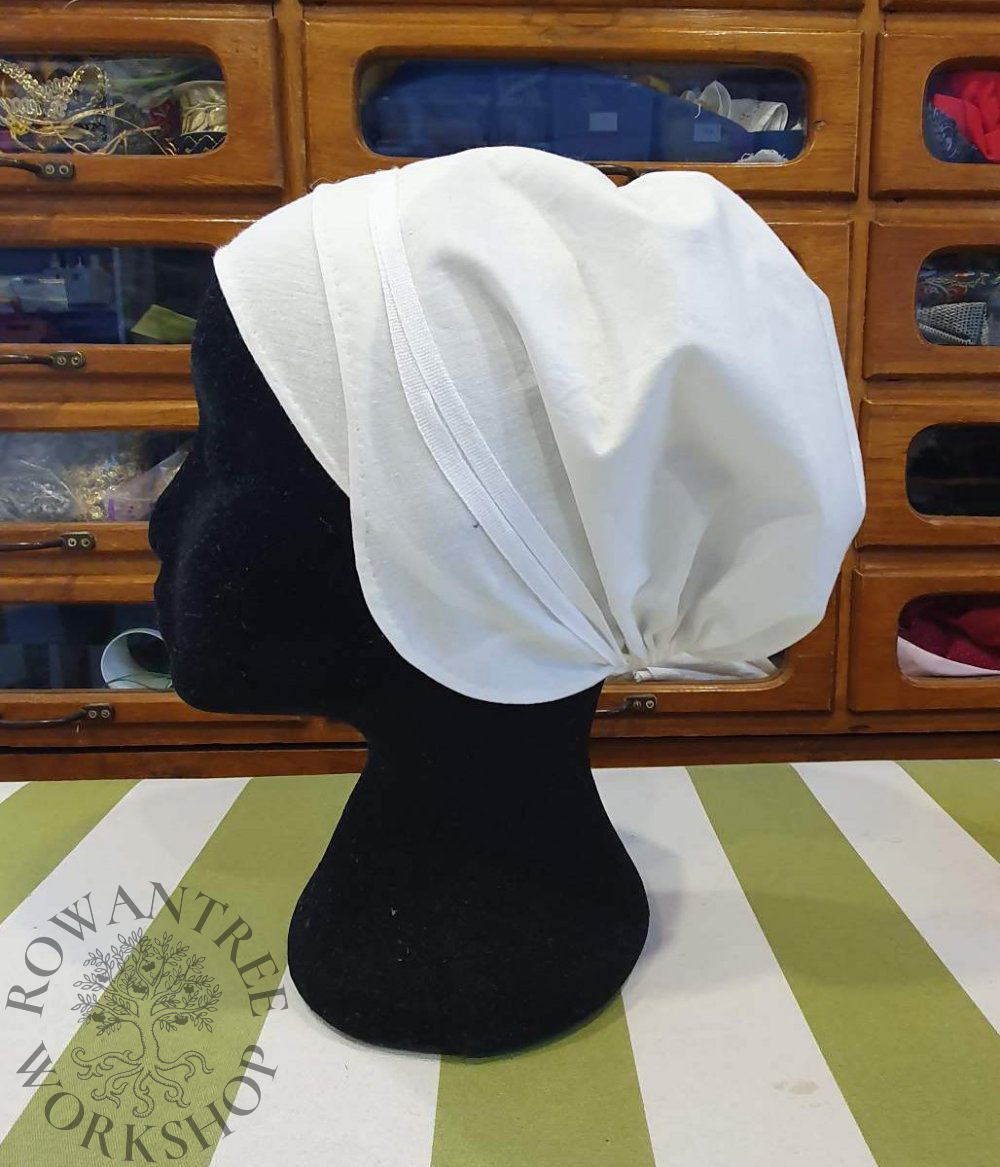
Linen caps and coifs of various types were one of the most common types headwear worn by lower and middle class women in western Europe during the middle ages. By the 16th century, many European countries and regions had their own distinctive headwear at all levels of society.
This particular style is was worn in England in the mid-late 16th century. The coif was worn by itself indoors and in informal situations, or with a hat on top when out in public.
Plain linen versions were worn by the working-class women, while middle-class and aristocratic women wore coifs with elaborately embroidery or other decoration.
Research and Design
There are surprisingly few images of the English middle class from the 16th century, but we do have many portraits of the upper class – and several extant examples of embroidered coifs. The shape and construction of the plain coifs can be extrapolated from the ornate versions.

Source: V&A Museum
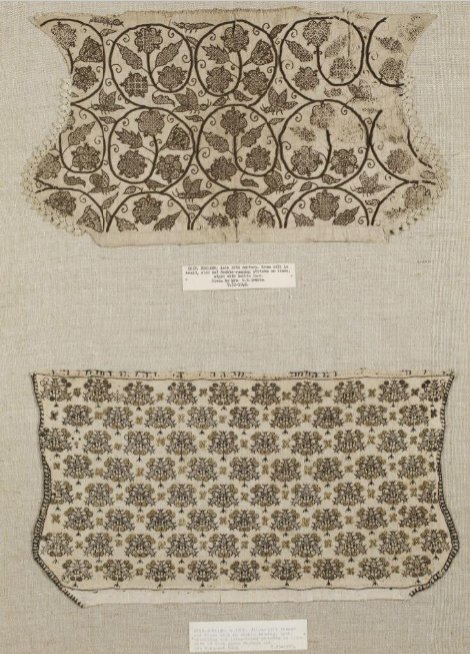
Source: V&A Museum

The image of two unpicked coifs from the V&A shows how varied the shape is – the upper version would have an extreme point on top, while the lower one would be much straighter. The third image of the coif and forehead cloth show how these were worn together.
The miniature of Lady Katherine Grey below shows her wearing a white coif, with the typical pointed front and gathered back. It is worn well back on her head, with no forehead cloth. The two middle class women depicted in the coloured etching by Hoefnagel are wearing plain white coifs tied over their taped hair, with large forehead cloths.

Source: Wikimedia
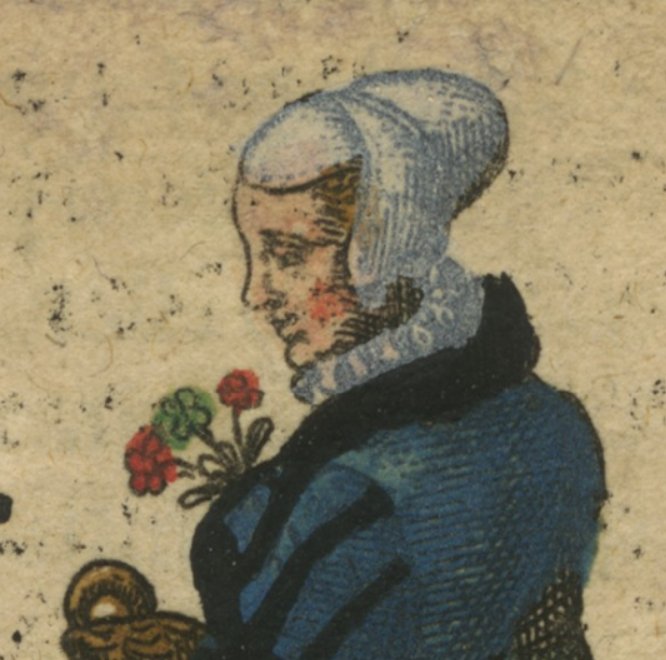
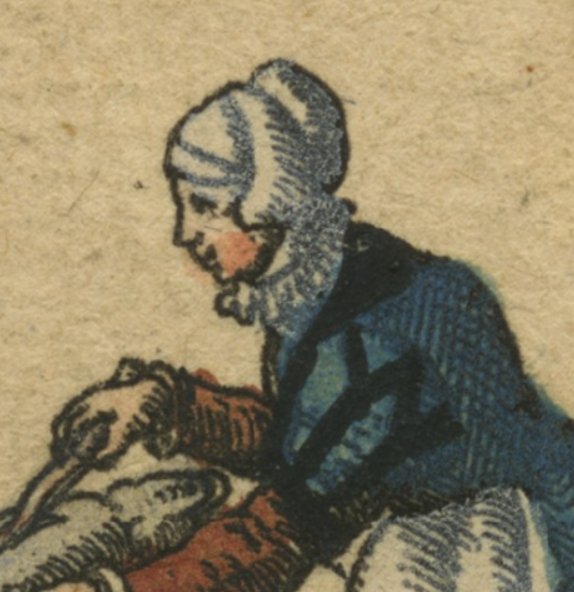
Given Lady Katherine Grey’s status and clothing, her coif may have had an ornamental insertion seam, or may have been decorated with Whitework embroidery, such as these later examples:

Source: V&A Museum

Source: V&A Museum
The size of the coif also varies, due to different head sizes and changing fashions. The five examples in Patterns of Fashion 4 (Arnold 2008) vary from 40-50cm wide and 20-25cm high. The eight late 16th century examples in the V&A vary from 40-50 wide and 22-25cm high.
The extant examples are all made of fine, dense white linen, embroidered in silk. They are not lined, but the lower corners are often folded in, providing support to the cheek curve. The drawstring casing is usually an extension of the ground fabric, but may also be a separate casing, or even loops of cord.
Construction
My reconstruction is a plain coif – the type worn by lower and middle class women. The coif was typically worn with dressed hair, which keeps it in place, so I added a bun to my headform before patterning a coif at the upper end of the size range seen in the V&A examples.
My final pattern was 50cm x 27cm (including hem allowances), and I needed 1.4m of 5mm wide twill tape.
I cut the coif from fine dense linen, then worked a fine hem along the top and front edges, including the sides of the casing, using fine linen thread. I turned up the casing and sewed this with running stitch.
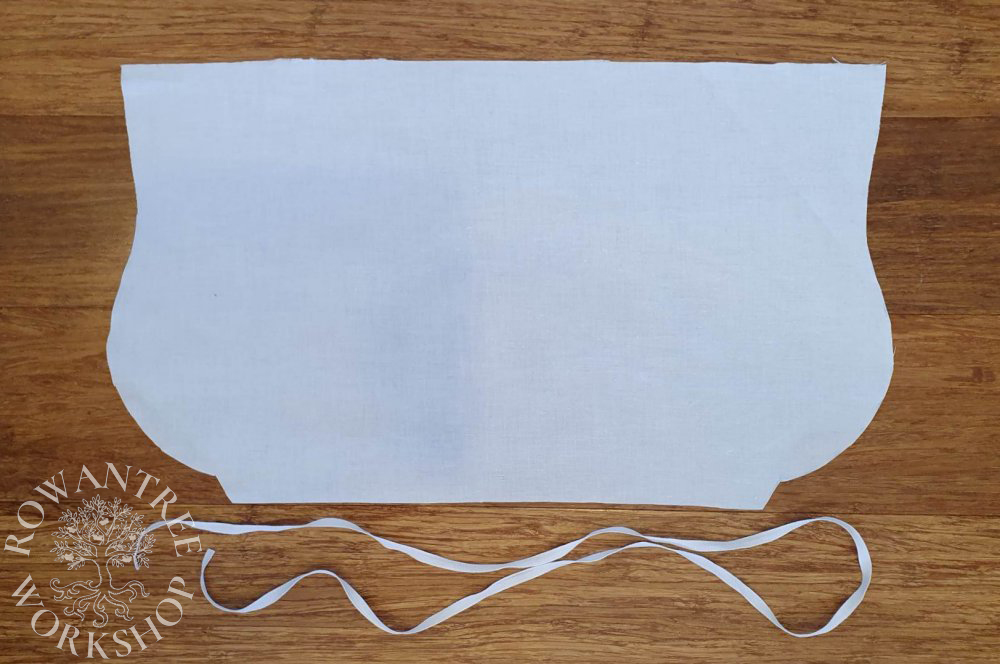
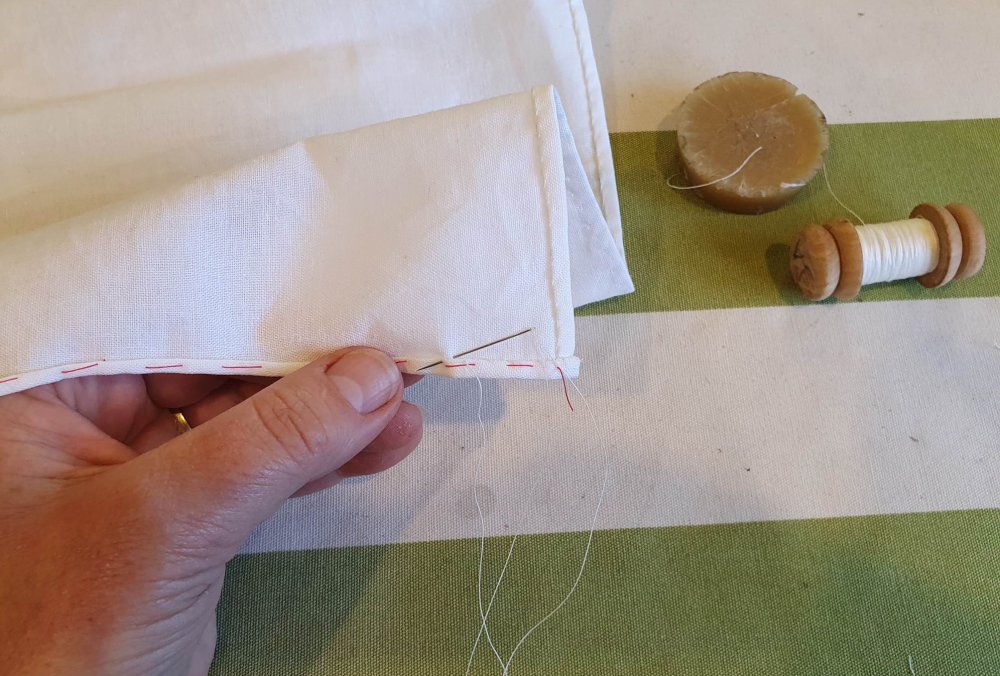
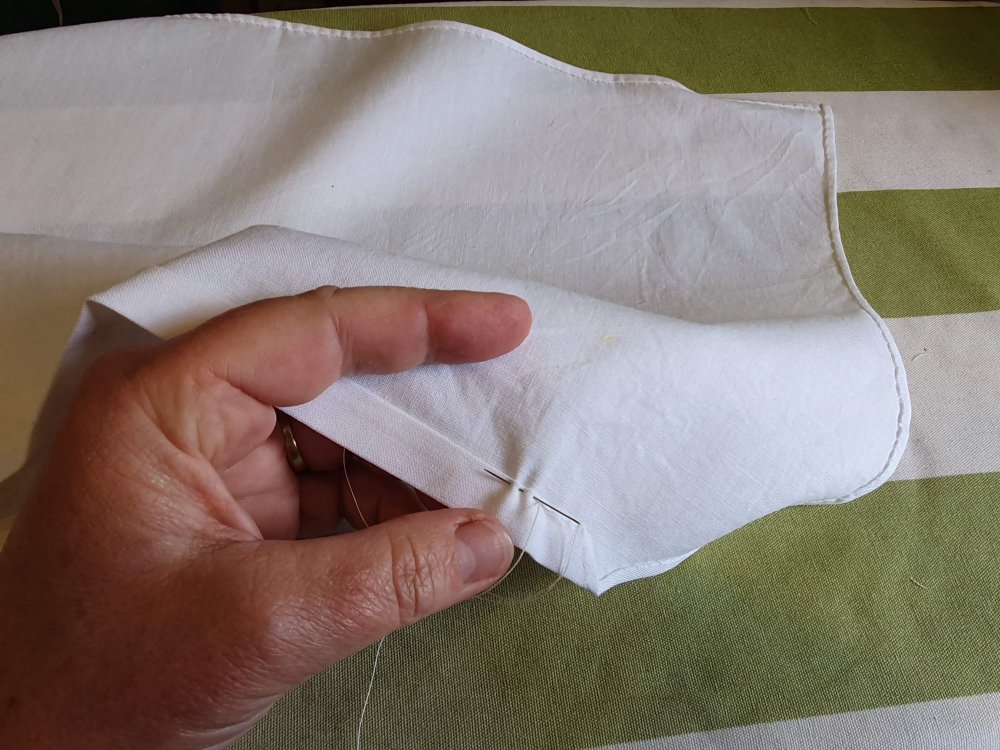
With the hems complete, I folded the coif in half and pinned 10cm from the front edge, then worked the front seam in whip stitch.
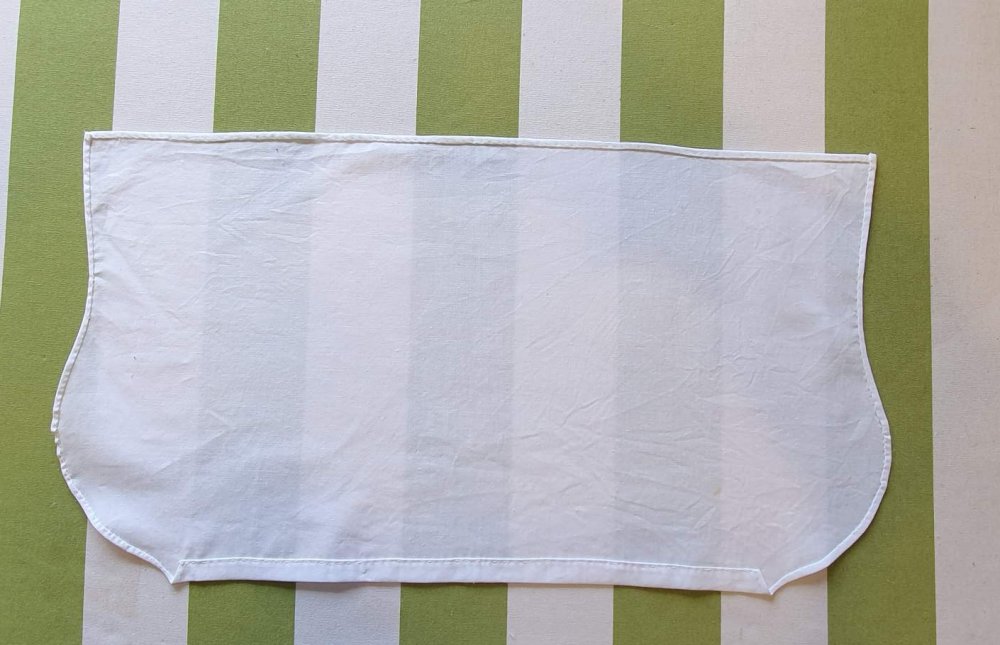
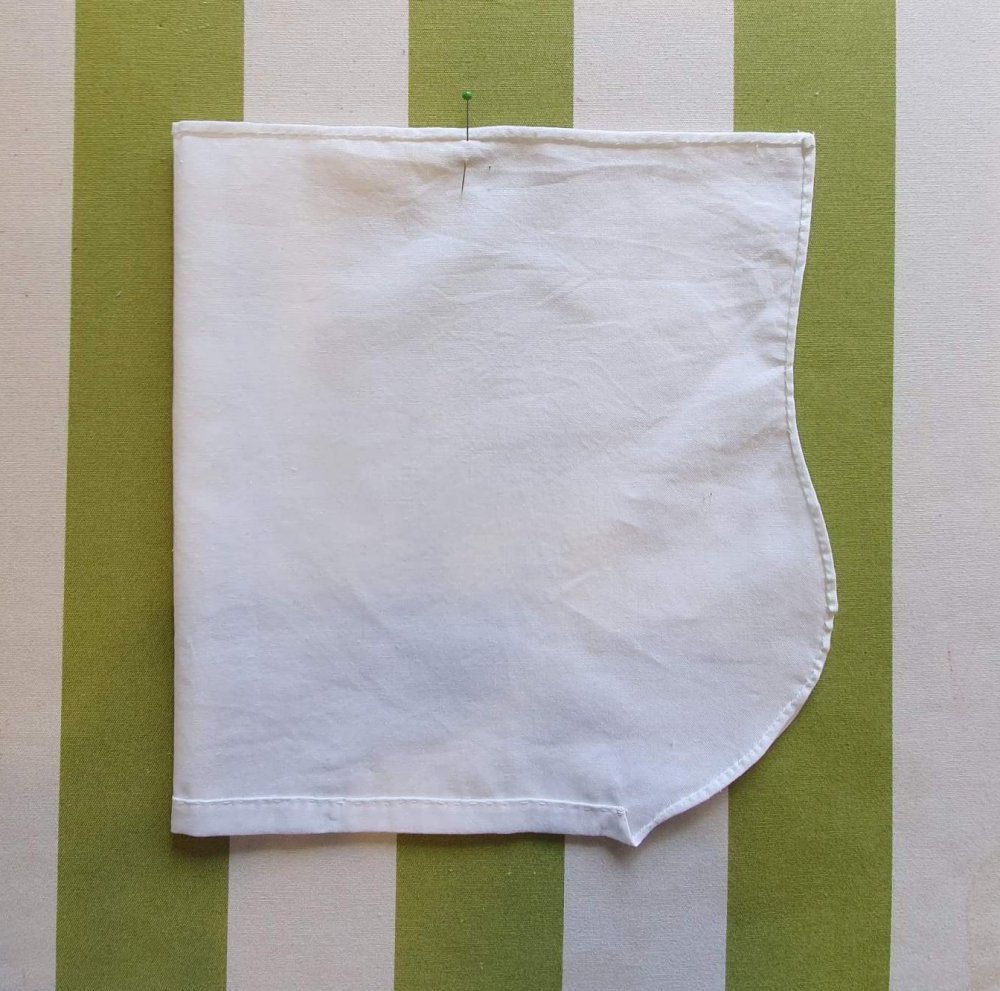
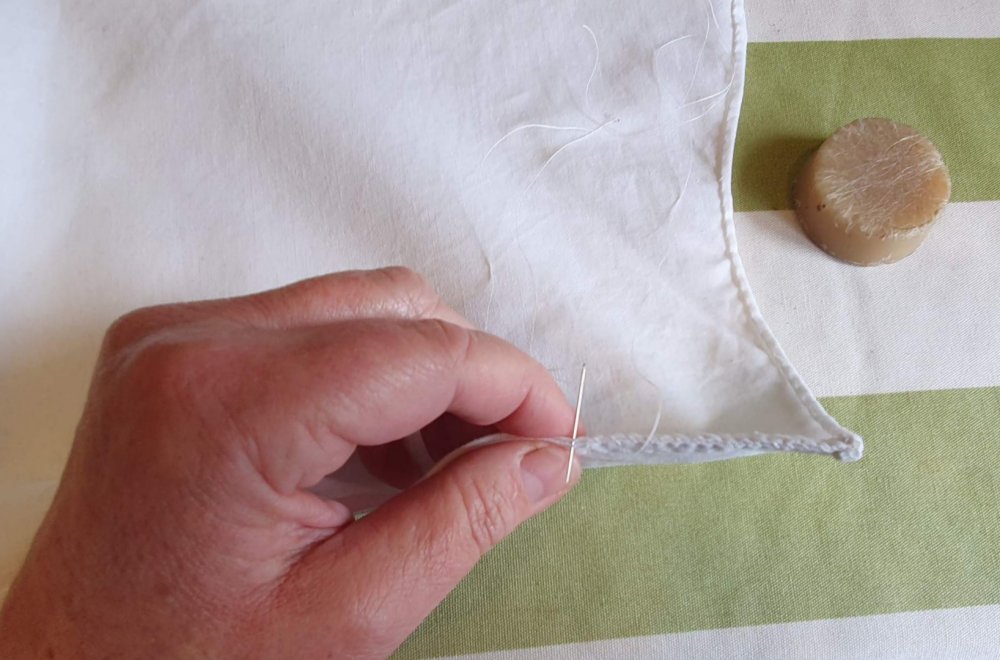
For the back pleats, I used my thread to gather the fabric in small pleats, then stitched these together. I turned the coif out, threaded the tape through the casing and hemmed the tape ends to avoid fraying.
I made a forehead cloth from half a 22cm square, with a fine hem all around. I sewed tapes on the corners, as seen in the extant example above, and hemmed to ends.


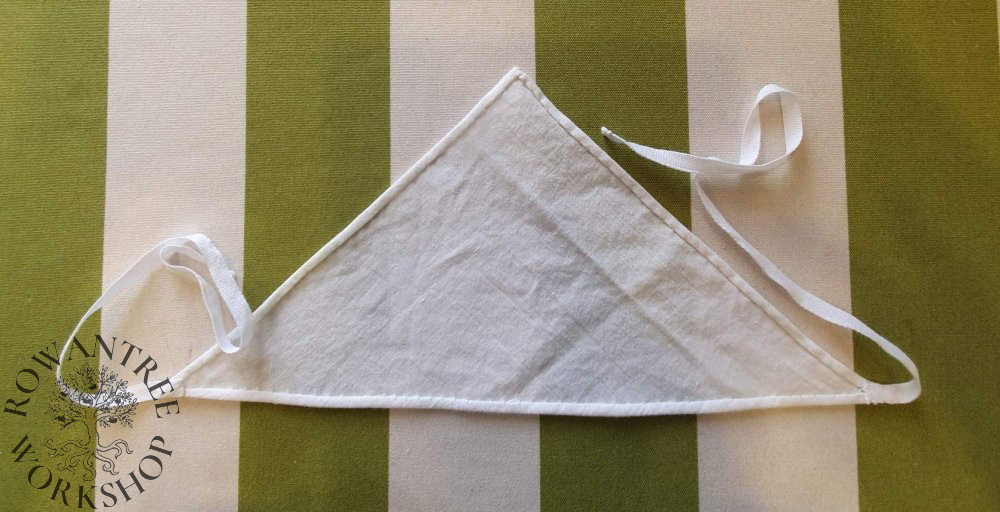
The completed coif can be worn with or without the forehead cloth, it does help protect the coif against sweat (so turning the other triangle into a spare cloth might be useful).


A note on wearing the coif…
This style of coif, like many renaissance women’s headdresses, work best if you have long hair, which is then taped up or put into a bun. The ties from the coif gather the cloth at the nape of the neck and are then secured by wrapping around the taped hair or bun.
If you have short hair, you will need to cross the tapes over your head and back, then tie at the name of your neck. It is not as secure, but will work – especially if you use a forehead cloth to provide friction.

